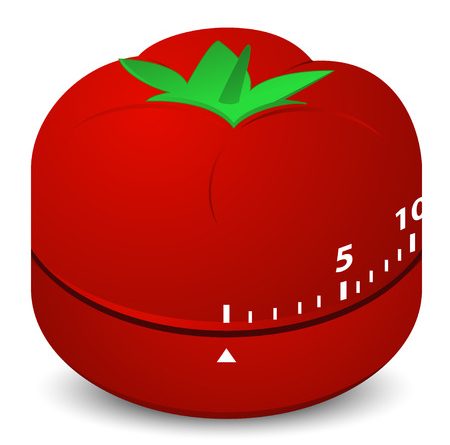Time Boxing for Personal Productivity
Sometimes I struggle with lack of focus. I have 101 things to do but I can’t motivate myself to do the things that really need to get done. Busy work, justifying avoiding the important tasks by working on other tasks, greatly diminishes personal effectiveness.
I also occasionally suffer the exact opposite problem. I can get laser focused on a task and then I am so engrossed I neglect other things. Total emersion in an important task might not sound like a bad idea. However, if it causes me to forget dinner is burning in the oven, or that I am supposed to be in a meeting it can be disruptive.
Could it be possible that a single simple technique could help address the polar opposite problems of too much and too little focus? Could it also help address procrastination? Like a device to keep hot drinks hot and cold drinks cold this feat is possible.
Explicit allocation of chunks of time is one way to tackle both of these problems. The Pomodoro Technique is probably the most well-known approach to time boxing for personal effectiveness. It is one of many approaches to the gamification of productivity that I intend to blog about. Pomodoro is Italian for tomato – it was a tomato shaped timer that gave rise to this technique.
A note of caution before we continue. Being effective, that is getting done those things that move you closer to your work or life goals, is not about filling every minute with activity. Time management is dead. To be effective you need to manage your attention and your energy. I’m presenting this not as a time management technique but as an approach to attention management
Tomatoes for time boxing
Enter possibly cheapest productivity tool there is – a simple timer. It’s even cheaper than the lovely Leuchtturm 1917 notebook I use for journaling. The concept is simple. Every hour is broken into 4 slots. A 25-minute working slot followed by a 5-minute break slot.
5 steps to time boxing
- Select a task that you need to get done. If deciding what to work on is a problem I’ve got posts on managing priorities and breaking down big tasks.
- Set the timer for 25 minutes and make a commitment to yourself. Unless the building burns down you are going to work on this task and nothing else for the next 25 minutes. No Facebook. No email. Not even a call from the boss. Deep work is what delivers professional results.
- Work on the task until the alarm goes. If something else tugs at your attention capture it and return to the task at hand. I’ll not bore you with the research that demonstrated the productivity-zapping cost of context switching.
- Tick off the task. If there is more to do on this task add the reaming work to your task management system
- And relax. Take 5 minutes for yourself. Get away from your computer. Mediate, juggle, do burpees, anything but sitting at your computer. Again I’ll spare you from the research on the power of breaks.
Benefits of a system
Most of us have systems for charging expenses, booking holidays and 101 other things that are important but in the grand scheme not significant. How we spend our time at work determines the outcomes we achieve and yet many of us are slaves to email with no system to manage our most precious and irreplaceable resource – our time.
Having a system like this opens the door to a world of opportunities. Schedule a pomodoro to manage your email inbox – can you process more emails than your last session. This brings a competitive gamification to a dull task.
Track how any sessions it takes to complete the monthly report. This starts building an estimate for how long tasks take. This data can be useful in conversations exploring if some activities are really worth the time they take.
Within a time box you can monitor the sources of distractions. If distractions come from a common source, is there something that can be done to address them in a less reactive way? Do your colleague keeps asking where the expense codes files are? If so you could create a small working aid and pin it on the notice board. If the marketing guys always ask the same questions can you set up email form templates to make the responses quicker to action (or maybe even automated)?
Tracking what you have spent your sessions on, where you have invested an irrecoverable resource, allows you to assess if this aligns with your priorities. If you are spending all your time on your third tier objectives, or your low-value customers then you might not be adequately investing in your priorities.
When you have a feel for how long things take and how many slots you can fit in your working week you can also start to manage over commitment. Discussions with the boss about taking on a new task can be done with a fair assessment of what it might have to displace.
Beyond the workplace
The technique of timeboxing is a powerful one. Time boxing is the backbone to many agile software development practices. This technique is not just for the office though, it can be a handy technique for progressing undesirable household chores. Time boxing can also be a tool to get reluctant children to progress their homework (or constrain their Minecraft exploits).


Pingback: Agh, where did all my time go? Time Analysis – Differently Wired
Pingback: Top 9 Productivity Devices Useful for Working From Home - Ezefidelity Curated Contents
Pingback: ≫ Los 9 mejores dispositivos de productividad útiles para trabajar desde casa 2021